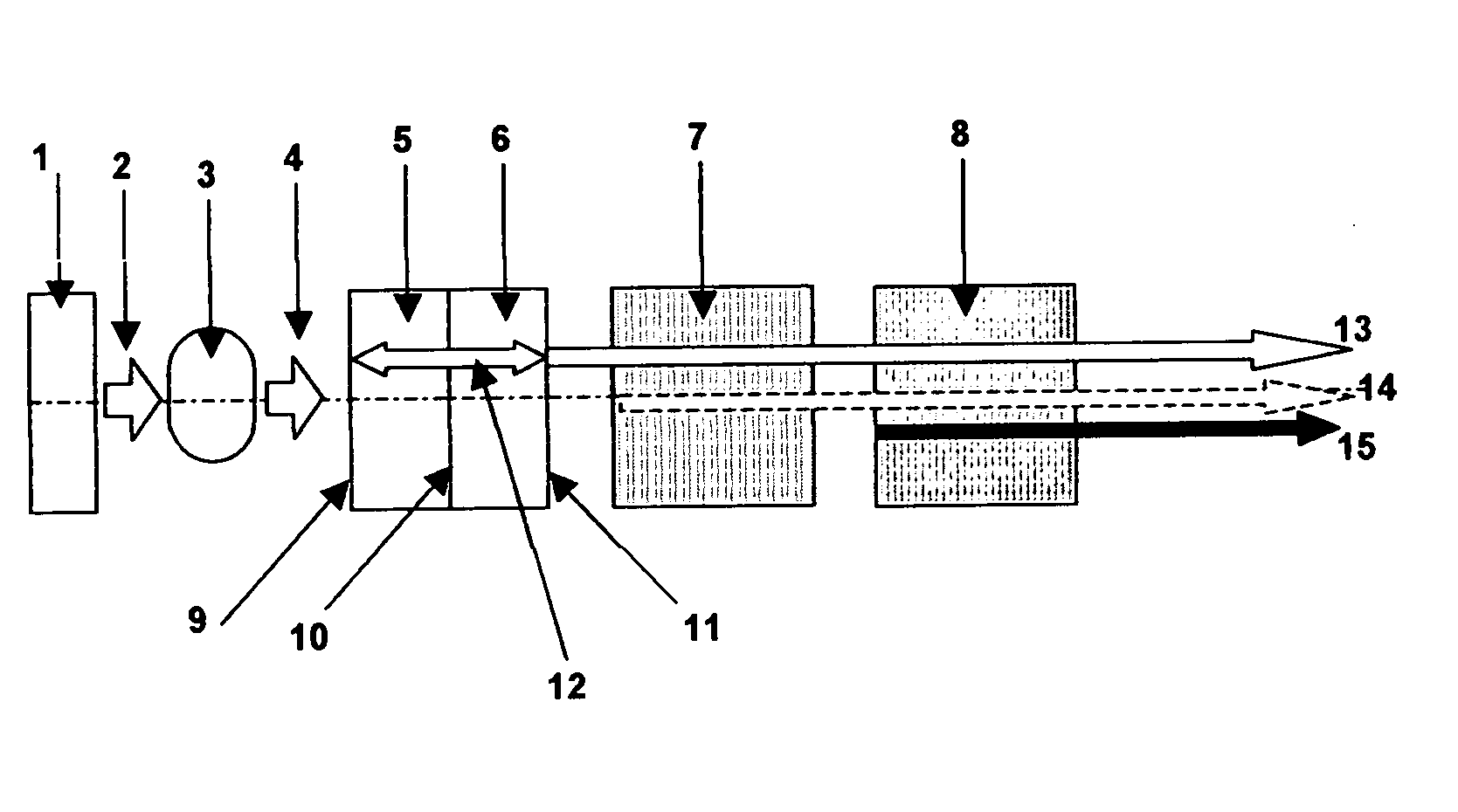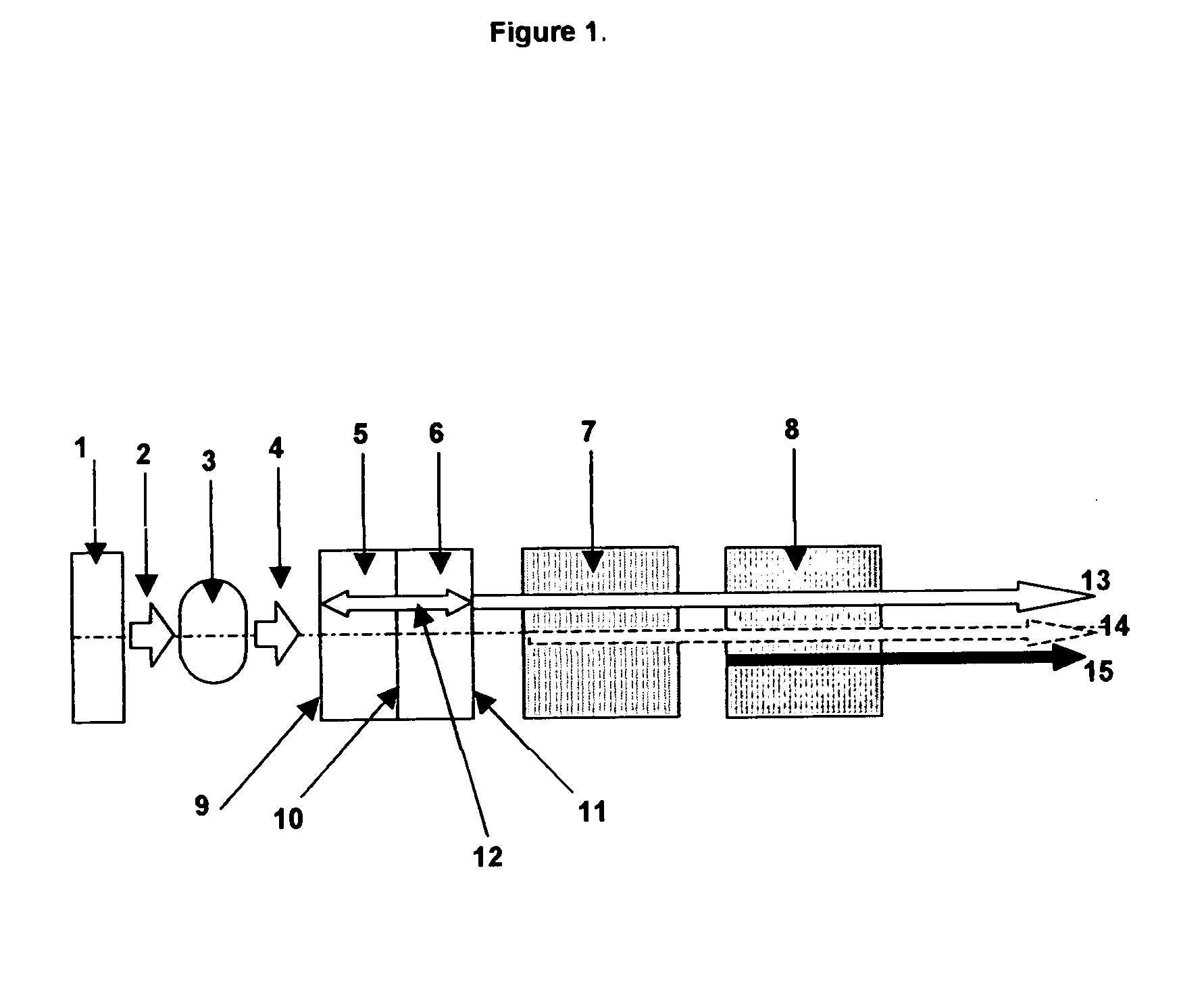Compact efficient and robust ultraviolet
a solid-state laser, compact technology, applied in the direction of laser details, optical devices for lasers, optics, etc., can solve the problems of inefficiency, large size, bulky and high-cost gas lasers, etc., to achieve high peak power, low cost, and easy to achieve high nonlinear conversion efficiency
- Summary
- Abstract
- Description
- Claims
- Application Information
AI Technical Summary
Benefits of technology
Problems solved by technology
Method used
Image
Examples
Embodiment Construction
[0024]The technological challenges in the periodic poling of MgO or ZnO-doped and stoichiometric LiNbO3 and LiTaO3 have recently been overcome by the inventors and these new materials have proven to be readily manufacturable. Short poling period crystals suitable for laser conversion into visible and near-UV wavelength ranges have been produced and technology for such production process has been described in copending, commonly assigned (Published US Patent Application 2005 / 0,133,477). The teaching of this patent creates an opportunity to provide an efficient and compact UV laser source platform based on solid-state lasers.
[0025]The present invention discloses compact and low-cost architectures and method for building UV laser sources based on periodically poled lithium niobate and lithium tantalate that contain dopants such as MgO or ZnO or have a specified degree of stoichiometry that ensures high reliability of these materials. The following solid-state laser platforms provide ef...
PUM
 Login to View More
Login to View More Abstract
Description
Claims
Application Information
 Login to View More
Login to View More - R&D
- Intellectual Property
- Life Sciences
- Materials
- Tech Scout
- Unparalleled Data Quality
- Higher Quality Content
- 60% Fewer Hallucinations
Browse by: Latest US Patents, China's latest patents, Technical Efficacy Thesaurus, Application Domain, Technology Topic, Popular Technical Reports.
© 2025 PatSnap. All rights reserved.Legal|Privacy policy|Modern Slavery Act Transparency Statement|Sitemap|About US| Contact US: help@patsnap.com



